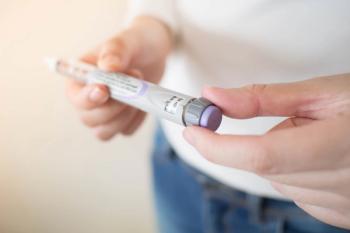
Why so many pharmacy robberies in Indiana?
Many people are pondering that question following the recent release of statistics from the Drug Enforcement Administration that showed Indiana led the nation in pharmacy robberies.
Many people are pondering that question following the recent release of statistics from the Drug Enforcement Administration (DEA) that showed Indiana led the nation in pharmacy robberies.
Not only does Indiana top this dubious list, but the 68 robberies recorded in the Hoosier State during the first five months of 2015 are twice as many as California (31) and more than five times as many as Texas (12).
“We are very concerned about the rapid growth of pharmacy robberies in Indiana,” said Randy Hitchens, executive vice president of the Indiana Pharmacists Alliance. “Obviously, this is something that is a direct threat to many of our members.”
During one weekend this past March, there were at least four robbery attempts at CVS locations in Indianapolis alone. Ken Fagerman, RPh, MM, author of Staring Down the Barrel: A Pharmacists' Guide to Diversion and Coping with Robbery and a former Indiana pharmacist, called the robbery trend Indiana’s “dirty little” problem.
“These leaked narcotics are working capital for drug traffickers and cost the taxpayers and citizens of Indiana great expense in the form of social services delivered to the victims and families of drug abuse, police time prosecuting the criminals, and the theft and destruction of property by addicted individuals to obtain funds to purchase them,” Fagerman told Drug Topics. “[These] repeatedly and too easily robbed pharmacies need to be closed by the State of Indiana Board of Pharmacy as public health nuisances.”
So why are there so many pharmacy robberies in Indiana?
Greg Westfall, special agent in-charge at the DEA’s Indianapolis office, said several factors are fueling the surge in pharmacy robberies in Indiana, including the state’s crackdown on pill-mill doctors and pharmacies.
“It’s simple supply versus demand. There is less overprescribing, so they’re going to find other ways to get [opioids],” Westfall said.
Earlier this summer, federal prosecutors said they were targeting pill-mill doctors and pharmacies throughout Indiana because of a recent spike in HIV cases. By June of 2015, more than 160 people had tested positive for HIV in southern Indiana.
Healthcare and law enforcement officials speculated that drug abusers who had graduated to heroin from painkillers fueled the spike in HIV cases.
According to the Centers for Disease Control and Prevention, 109 painkiller prescriptions were written for every 100 people in Indiana in 2015. The national average was 82 prescriptions per 100 people.
The speculation is that as opioids become more difficult to obtain through prescriptions, some abusers turn to heroin while others feed their addictions by drugs obtained through pharmacy robberies.
Low risk, high-reward crime for juveniles
Lt. Craig McCartt of the Indianapolis Police Department, said most of the robberies are committed by juveniles who are recruited by adult ring leaders, often through social media. “[The robberies] could just as easily be happening someplace else. These guys have found out that it is relatively easy,” McCartt said. “And word has spread.”
McCartt said many juveniles see the pharmacy robberies as low risk and high reward. “As soon as we arrest one, there are two to take their place.”
He said Indiana must change it laws so that there are stiffer penalties for juveniles who commit these crimes.
Back in January, police said a boy believed to be between 10 and 13 years old used a threatening note to rob an Indianapolis pharmacy. The boy handed an employee a note that announced the robbery and the specific pills requested.
The note implied that the boy would kill everyone if the pharmacy’s alarm button was pushed. The pills were given to the boy in a brown paper bag and he fled on foot.
Pharmacy employees caught in the crossfire
One CVS pharmacy employee recently called on the retail chains to make security changes that would discourage robbery attempts, including remodeling older stores, installing bulletproof safety glass, posting security guards from open until close, and storing certain drugs in special safes. The unidentified employee has reportedly survived five robberies and two attempted robberies.
“Every person who walks through the door in a hoodie, you want to say is this that guy,” the CVS pharmacy employee
Michael DeAngelis, a CVS corporate spokesperson, said the safety and well-being of customers and employees is the retail chain’s highest priority. “We have security policies and procedures in place at all of our stores and we regularly review them to ensure effectiveness, including hi-def security cameras and security guard presence at select locations,” he stated in response to the CVS employees’ call for increase security.
Fagerman said the retail chains are partially at fault for this disturbing robbery trend. “Their corporate approach has been to keep narcotic inventories low, give them the drugs, and get back to work. They fail to even cooperate with police,” Fagerman said. [To them] robbery is simply a small business inconvenience and expense of doing business.”
Newsletter
Pharmacy practice is always changing. Stay ahead of the curve with the Drug Topics newsletter and get the latest drug information, industry trends, and patient care tips.























































































































